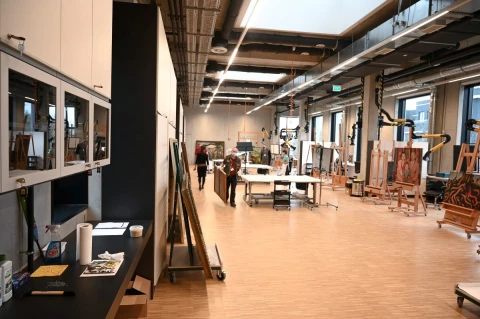
The OMRRK provides outstanding professional conditions
The National Museum Conservation and Storage Centre (OMRRK), an outstanding complex of its kind in a European comparison, provides outstanding professional conditions and technical infrastructure for the preservation of a total of nearly 350 thousand artworks and artefacts from the collections of the Museum of Ethnography, the Museum of Fine Arts and the Hungarian National Gallery.
The Israelite Hospital, once standing here, was among the most prominent clinics in Budapest in the interwar years, employing numerous domestically and internationally acclaimed doctors engaged in research. After World War II, the institution operated as the Institute of Medical Further Education. Later it received university rank and merged into the Semmelweis University of Medicine in 2000, until its closure in 2007.
The construction of the OMRRK provided a long-term, modern and reassuring solution for several decades of problems linked to the holdings and storage of our national public collections. The features, cutting-edge infrastructure and capacity of the completed institution makes it a rare example even among the top museums of Europe.
The complex with a floor area of 37 thousand square metres includes world-class restoration workshops, warehouses and research rooms, while it is also home to the Central European Research Institute for Art History. We retained and renovated the two original, salvageable buildings, which were located in the middle plot: the former Adél Bródy Clinic and the former Jewish House of Prayer. The Hungarian development stands its ground when compared with similar facilities serving the British Museum in London and the State Hermitage Museum in Saint Petersburg, as well as the one being implemented for the Louvre in Paris.
